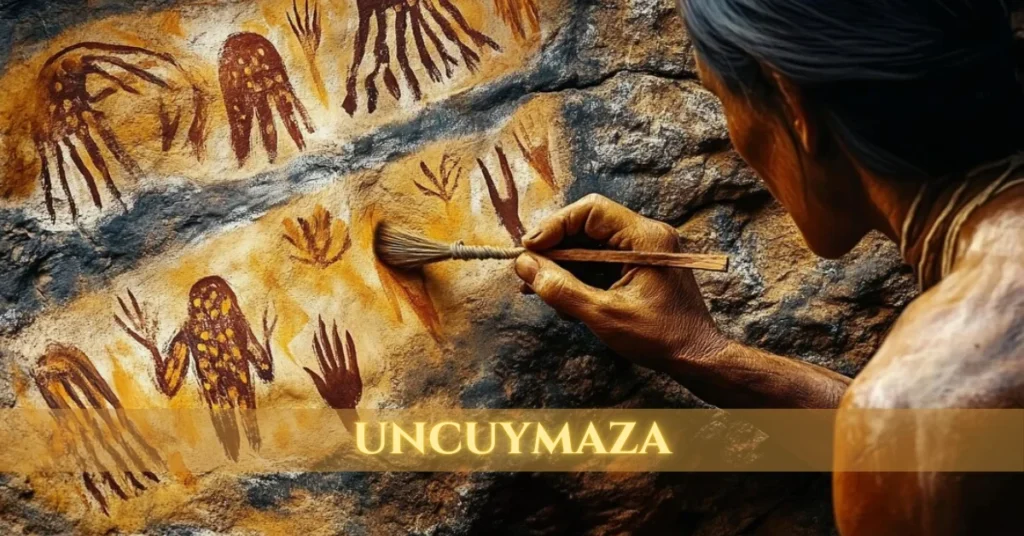Lifestyle
Uncuymaza: Exploring Education and Innovation at the Heart of Mendoza
Published
2 months agoon
By
Henry
In the picturesque province of Mendoza, Uncuymaza Argentina, education thrives through institutions that are not only historic but also forward-thinking. Two such institutions—Universidad Nacional de Cuyo (UNCUYO) and Universidad Juan Agustín Maza (UMaza)—combine tradition and innovation, shaping the future of thousands of students. Together, often informally referred to as Uncuymaza, these universities symbolize the dynamic educational landscape of Mendoza, offering diverse programs and fostering innovation at every level.
A Tale of Two Universities: UNCUYO and UMaza
Universidad Nacional de Cuyo (UNCUYO)
Founded in 1939, UNCUYO is one of Argentina’s most prestigious public universities. It boasts a wide array of faculties—from Engineering and Law to Arts and Medical Sciences. With its emphasis on research, community service, and academic excellence, UNCUYO is known for producing leaders in various disciplines across Latin America.
Key Highlights:
- Over 12 faculties and multiple research institutes.
- Strong international exchange programs.
- Focus on sustainability, public health, and social justice.
Universidad Juan Agustín Maza (UMaza)
UMaza, established in 1960, is a private university that complements Mendoza’s educational ecosystem. While younger than UNCUYO, UMaza is highly respected for its focus on applied sciences, especially in health and veterinary sciences. It is renowned for modern facilities, practical learning, and a student-centered approach.
Key Highlights:
- Known for programs in Nutrition, Physical Education, Veterinary Medicine, and Enology.
- Emphasis on entrepreneurship and industry partnerships.
- Active engagement in regional development.
Why “Uncuymaza” Matters: The Blended Impact
While UNCUYO and UMaza are separate entities, the combination of their strengths—academic rigor from UNCUYO and practical innovation from UMaza—forms what some students and locals call “Uncuymaza.” This blend represents the best of public and private higher education in Mendoza.
Educational Diversity
Uncuymaza offers a wide range of programs catering to various student interests, from humanities and law to technology, agriculture, and health sciences. Together, the institutions cover nearly every academic field imaginable.
Innovation in Research
Both universities lead significant research projects. UNCUYO focuses heavily on environmental sustainability, public policies, and scientific exploration, while UMaza excels in food sciences, physical rehabilitation, and veterinary research. Their complementary focus helps create a well-rounded academic environment.
Local and Global Connections
With robust international agreements, students from Uncuymaza benefit from mobility programs with institutions across Europe, North America, and South America. This global exposure enriches their learning and enhances employability.
Student Life at Uncuymaza
Vibrant Campus Culture
Both campuses foster a thriving student culture. Music festivals, debates, innovation challenges, and volunteer programs keep students engaged. Whether you’re at UNCUYO’s lush park-like campus or UMaza’s state-of-the-art urban facilities, life at Uncuymaza is energetic and intellectually stimulating.
Focus on Community
Social commitment is a cornerstone of both institutions. From health clinics to environmental clean-ups and legal aid services, students regularly participate in initiatives that support Mendoza’s communities.
Driving Regional Development
Uncuymaza plays a vital role in Mendoza’s economy and social fabric. Research and development from both institutions contribute to:
- Wine and agriculture industry improvements.
- Public health interventions and nutrition plans.
- Technology development in renewable energy and agro-tech.
This collaborative impact has helped position Mendoza as not just a wine capital but a center for educational excellence and innovation.
The Future of Uncuymaza
As Argentina continues to adapt to global educational trends, Uncuymaza is evolving rapidly. Both institutions are investing in:
- Digital learning platforms.
- Artificial intelligence and biotechnology programs.
- Cross-institutional research partnerships.
Moreover, they aim to deepen their community engagement, making education more accessible to rural and underserved populations.
Conclusion
Uncuymaza isn’t just a term—it’s a powerful symbol of how collaboration between public and private universities can transform education, research, and society. By combining the strengths of UNCUYO and UMaza, Mendoza offers students a unique and dynamic academic experience that’s rooted in tradition but firmly focused on the future.
Whether you’re a prospective student, educator, or researcher, exploring what Uncuymaza offers is a step into a world of possibility, innovation, and impact.
FAQs About Uncuymaza
Q1: Is Uncuymaza an official institution?
No, “Uncuymaza” is an informal term combining UNCUYO and UMaza, two separate universities located in Mendoza.
Q2: Which university is better—UNCUYO or UMaza?
Both have strengths. UNCUYO excels in research and public education, while UMaza is known for practical applications and health sciences.
Q3: Can students transfer between UNCUYO and UMaza?
While the institutions are separate, students may apply to either and transfer credits depending on specific program agreements.
Q4: What programs are unique to UMaza?
UMaza offers specialized degrees in Enology, Veterinary Medicine, and Physical Education not commonly found elsewhere in the region.
Q5: Are there opportunities for international students?
Yes, both universities have international partnerships and offer exchange programs for students worldwide.
You may like
Lifestyle
Unlocking the Secrets of A&TA: Everything You Need to Know
Published
1 month agoon
July 23, 2025By
Harry
Are you ready to dive into the world of A&TA? As businesses evolve, so do their needs for efficiency and innovation. Automation and Task Automation (A&TA) is here to revolutionize how companies operate. Whether you’re a seasoned executive or a curious entrepreneur, understanding A&TA can unlock new opportunities for growth and productivity. This guide will explore everything from its impact on business performance to practical steps for implementation. Join us as we unravel the secrets of A&TA—your key to staying ahead in today’s fast-paced landscape!
Unlocking the Secrets of A&TA: Everything You Need to Know
A&TA simplifies complex processes, enhancing efficiency and decision-making. By leveraging automation, businesses can streamline operations, reduce errors, and focus on strategic growth opportunities. Discover its transformative potential.
What is A&TA?
A&TA, or Automation and Task Automation, streamlines processes by utilizing technology to enhance efficiency and accuracy in various business operations across diverse industries.
How A&TA Boosts Business Performance
A&TA enhances efficiency by automating repetitive tasks, allowing teams to focus on strategic initiatives. This leads to better decision-making and improved overall business performance.
Steps to Implement A&TA Effectively
Identify key processes, set measurable goals, engage stakeholders, invest in training, utilize the right tools, and monitor progress regularly to ensure effective A&TA implementation.
The Role of AI in A&TA
AI enhances A&TA by streamlining processes, providing data-driven insights, and automating repetitive tasks. This integration leads to improved efficiency and smarter decision-making for businesses.
Common Challenges and How to Overcome Them
Resistance to change often hinders A&TA implementation. Engaging stakeholders early and providing training can ease transitions, fostering a culture of adaptability that embraces innovation.
What industries can benefit from A&TA?
A&TA can transform various industries, including manufacturing, healthcare, finance, retail, and telecommunications. Each sector gains efficiency and insights through automation and task analytics for improved performance.
How does A&TA differ from traditional analytics?
A&TA focuses on automation and real-time data processing, while traditional analytics relies more on historical data analysis, making it less responsive to immediate business needs.
Do small businesses need A&TA?
Small businesses can greatly benefit from A&TA. It streamlines processes, enhances efficiency, and provides insights that help make informed decisions for growth and competitiveness.
How can AI improve the effectiveness of A&TA?
AI enhances A&TA by automating data analysis, providing actionable insights, personalizing user experiences, and optimizing decision-making processes across various business functions.
Empowering Connections: A&TA Vision for a Connected Future
A&TA envisions a future where seamless connectivity empowers businesses. By harnessing advanced analytics, organizations can foster collaboration, drive innovation, and unlock new opportunities for growth.
A Legacy of Innovation
A&TA has consistently pushed boundaries, pioneering technologies that redefine industries. Their commitment to innovation drives solutions that empower businesses and enhance consumer experiences worldwide.
Leading the 5G Revolution
The 5G revolution transforms connectivity, enhancing speed and reliability. Businesses can leverage this technology for innovation, driving growth in various sectors and improving user experiences worldwide.
Expanding Fiber Infrastructure
Expanding fiber infrastructure enhances connectivity, enabling faster internet speeds and improved reliability. This investment supports digital growth, empowering communities with access to essential services and opportunities.
Global Presence and Local Impact
A&TA spans continents, adapting solutions to local needs. This blend fosters innovation and community support, driving meaningful change while enhancing global connectivity for everyone involved.
Commitment to Excellence
A&TA prioritizes quality in every endeavor. This commitment drives innovation, improves processes, and ensures customer satisfaction, fostering a culture of continuous improvement across all operations.
Empowering Communities
Empowering communities involves fostering collaboration, enhancing local resources, and promoting education. Through strategic initiatives, we can uplift neighborhoods and create sustainable growth for future generations.
Q1 What services does A&TA offer?
A&TA offers a range of services, including data analytics, workflow automation, and task optimization to enhance efficiency and drive performance across various industries.
Q2 How does A&TA 5G benefit consumers?
A&TA 5G enhances consumer experiences by providing faster internet speeds, reduced latency, and improved connectivity. This leads to seamless streaming, gaming, and efficient smart device interactions.
Q3 Is A&TA available in Pakistan?
Yes, A&TA is available in Pakistan. Companies are increasingly adopting this innovative approach to enhance efficiency and drive business growth in the region.
Q4 How is A&TA contributing to social causes?
A&TA actively supports social initiatives by leveraging technology for community outreach, enhancing educational programs, and promoting sustainable practices that uplift marginalized groups.
A&TA 2025: The Complete Awareness & Transformative Action Framework
A&TA 2025 outlines a strategic framework focusing on awareness, evaluation, transformative action, and sustainability. It aims to drive continuous improvement across various industries for enhanced performance and results.
Table of Contents
A comprehensive table of contents guides readers through the intricate details of A&TA, ensuring easy navigation and a clear understanding of each essential topic covered.
The Four Pillars of the A&TA Framework
The A&TA framework stands on four essential pillars: awareness, evaluation, transformative action, and sustainability. Each pillar supports continuous growth and innovation within organizations.
Quantifying A&TA: Real-World ROI Case Studies
Real-world case studies illustrate A&TA’s impact, showcasing significant ROI through enhanced efficiency, reduced costs, and improved customer satisfaction across various industries. Results speak volumes about its effectiveness.
Top Tools & Technologies for A&TA
Leading tools for A&TA include machine learning platforms, automation software, analytics dashboards, and cloud solutions. These technologies streamline processes and enhance decision-making capabilities across various industries.
Common Pitfalls & How to Avoid Them
Underestimating change management can derail A&TA efforts. Ensure clear communication, set realistic expectations, and provide adequate training to smooth the transition for your team.
7-Point Strategic Checklist for Success
Identify clear goals. Assess current capabilities. Engage stakeholders early. Develop a detailed action plan. Monitor progress regularly. Adapt strategies as needed. Celebrate small wins to maintain momentum.
Awareness: Baseline Diagnostics
Baseline diagnostics involve assessing current capabilities and identifying gaps. This step lays the groundwork for successful A&TA implementation, ensuring informed decision-making moving forward.
Evaluation: Root-Cause Analysis
Root-cause analysis digs deep into issues, uncovering underlying problems. By identifying these roots, businesses can implement targeted solutions that drive lasting improvements and enhance overall performance.
Transformative Action: Change Execution
Transformative action requires clear planning, team alignment, and adaptive strategies. Focus on executing change efficiently to drive impactful results across your organization. Embrace flexibility throughout the process.
Sustainability & Feedback: Continuous Improvement
Sustainability and feedback are vital for continuous improvement. They create a cycle of learning, adaptation, and growth that drives long-term success in any organization or initiative.
Case Study 1: Manufacturing Efficiency
A leading manufacturing firm implemented A&TA, automating repetitive tasks and streamlining workflows. This led to a 30% increase in production efficiency while reducing operational costs significantly.
Case Study 2: SaaS Customer Onboarding
A SaaS company streamlined its customer onboarding by implementing A&TA. This reduced training time and improved user satisfaction, leading to higher retention rates and increased revenue growth.
Case Study 3: Healthcare Administrative Costs
A healthcare provider implemented A&TA to streamline billing processes, reducing administrative costs by 30%. This allowed more resources for patient care and improved overall service delivery.
Las grandes conexiones comienzan aquí
Las grandes conexiones comienzan aquí, donde la tecnología y la innovación se entrelazan. Cada paso hacia adelante nos acerca a un futuro más conectado y colaborativo.
El nuevo SamsungGalaxy Z Flip7 por cuenta nuestra
Descubre el nuevo Samsung Galaxy Z Flip7, una fusión de estilo y tecnología. Disfruta de su pantalla plegable y características innovadoras que redefinen la experiencia móvil.
iPhone 16 Pro por cuenta nuestra
Experience the latest innovation with the iPhone 16 Pro. Enjoy advanced features and stunning design, all while benefiting from exclusive offers tailored just for you.
El iPhone 15 por $7.99 al mes
Experience the cutting-edge technology of the iPhone 15 for just $7.99 a month. Stay connected and enjoy premium features without breaking the bank. Upgrade today!
El nuevo Samsung Galaxy Z Fold7 con un descuento de hasta $1,100
The new Samsung Galaxy Z Fold7 offers cutting-edge features and a sleek design, now available with discounts of up to $1,100. Upgrade your tech experience today.
Obtén un descuento de $200 por línea
Aprovecha la oportunidad de obtener un descuento de $200 por línea. Esta oferta te ayuda a reducir costos y mejorar tu experiencia móvil sin comprometer calidad.
iPhone 16 Pro Max con hasta $1,000 de descuento
Aprovecha la oportunidad de conseguir el iPhone 16 Pro Max con descuentos de hasta $1,000. No te pierdas esta oferta excepcional para disfrutar de tecnología avanzada.
Understanding A&TA (Automation and Task Automation)
A&TA simplifies processes by automating repetitive tasks. It enhances efficiency, reduces human error, and allows teams to focus on more strategic initiatives within their workflows.
Benefits of A&TA in a Workflow
A&TA streamlines processes, reduces manual errors, and enhances productivity. By automating repetitive tasks, teams can focus on strategic initiatives that drive innovation and growth.
Steps to Implement A&TA in Your Workflow
Identify specific tasks to automate. Choose the right tools and train your team. Monitor progress regularly and adjust strategies for continuous improvement in efficiency.
Common Challenges and How to Overcome Them
Implementing A&TA can lead to resistance and integration issues. Engage stakeholders early, provide training, and ensure clear communication to ease transitions and enhance acceptance.
Best Practices for Successful A&TA Implementation
Engage stakeholders early and often. Set clear objectives, utilize robust tools, and ensure continuous training. Monitor progress regularly to adjust strategies as needed for optimal outcomes.
Real Life Examples of A&TA in Action
A&TA powers smart factories, automating machinery for efficiency. Retailers use it to streamline inventory management, while healthcare facilities optimize patient scheduling and reduce administrative burdens effectively.
Conclusion: Embracing the Future of Workflow with A&TA
Embracing A&TA paves the way for streamlined workflows, enhanced efficiency, and transformative results. Adopting this approach empowers businesses to thrive in an ever-evolving landscape.
Is A&TA Worth It for Wireless & Internet?
A&TA can enhance efficiency and customer experience for wireless and internet companies. Improved automation leads to faster service, reduced costs, and a stronger competitive edge in the market.
The Purpose of A&TA for Wireless & Internet Companies
A&TA enhances operational efficiency for wireless and internet companies, streamlining processes and improving service delivery. This leads to better customer experiences and increased competitive advantage.
Benefits of A&TA for Consumers
A&TA enhances consumer experiences by streamlining services, reducing wait times, and offering personalized solutions. It empowers users with real-time insights for informed decision-making and satisfaction.
Drawbacks of A&TA for Companies
A&TA can lead to high implementation costs and complexity. Companies may also face resistance from employees who fear job displacement or struggle with the new technology.
Impact of A&TA on the Wireless & Internet Industry
A&TA revolutionizes the wireless and internet industry by enhancing operational efficiency, improving customer experiences, and driving innovation through data-driven insights that shape future connectivity solutions.
Alternatives to A&TA for Consumer Protection
Exploring alternatives to A&TA for consumer protection reveals various strategies that can enhance safety and satisfaction. Traditional approaches include regulatory oversight, which ensures companies adhere to established guidelines. Consumer advocacy groups also play a vital role in safeguarding interests by educating the public and lobbying for fair practices.
Another alternative is adopting advanced security measures such as encryption and secure transactions, which help protect user data without relying solely on A&TA systems. Additionally, transparency in service agreements fosters trust between consumers and providers. By ensuring customers understand their rights and options, businesses can create a more engaged clientele.
Leveraging customer feedback mechanisms allows companies to listen directly to users’ concerns while continuously improving services based on real input. These methods complement A&TA’s benefits by providing layered protection tailored to specific consumer needs within the wireless and internet landscapes.
It’s about finding the right mix of tools that prioritize consumer well-being while promoting innovation in technology-driven solutions.
Lifestyle
Exploring the World of Epices: A Journey Through Flavor and Aroma
Published
1 month agoon
July 17, 2025By
Harry
Introduction to EPCIS
Welcome to the vibrant world of epices, where taste and aroma come together in a delightful dance. These aromatic treasures add life to our meals and a touch of magic to our culinary experiences. From the warm embrace of cinnamon to the fiery kick of chili peppers, each spice tells its own story. Join us on this flavorful journey as we explore not just the spices themselves but also their vital role within supply chains around the globe. Whether you’re a seasoned chef or an enthusiastic home cook, you’ll uncover fascinating insights into how these ingredients shape our kitchens and markets alike. Let’s embark on this aromatic adventure!
What is EPCIS
EPCIS, short for Electronic Product Code Information Services, is a powerful framework designed to enhance supply chain visibility. It enables organizations to capture and share important information about products as they move through various stages of the supply chain.
This data includes details like location, status, and event history. By utilizing EPCIS, businesses can achieve greater transparency and improve decision-making processes while ensuring better compliance with industry standards. It’s an essential tool for modern logistics management in today’s fast-paced environment.
Importance of EPCIS in Supply Chain
EPCIS plays a crucial role in enhancing visibility across the supply chain. By enabling real-time tracking of products, it allows businesses to monitor inventory levels and manage logistics more effectively. This transparency fosters trust among stakeholders.
Moreover, EPCIS facilitates compliance with regulatory requirements. Companies can easily share data regarding product movements, ensuring traceability from manufacturer to end-user. As a result, organizations can respond swiftly to any disruptions or recalls, minimizing risks and improving overall efficiency in operations.
OpenEPCIS Integration and Solutions
OpenEPCIS serves as a robust platform for integrating various systems within the supply chain. Its flexibility allows businesses to adapt and customize solutions according to their specific needs, making it easier to track and manage inventory.
With its open architecture, OpenEPCIS fosters collaboration across industries. Companies can share vital data seamlessly, enhancing transparency and efficiency in operations. This integration paves the way for smarter decision-making through real-time insights into product movement and status.
OpenEPCIS Platform Overview
The OpenEPCIS platform serves as a robust foundation for tracking and managing supply chain data. Built on open standards, it allows organizations to seamlessly exchange information about products and their movements throughout the supply chain journey.
With its flexible architecture, OpenEPCIS supports various industries by enabling real-time visibility and transparency. Businesses can leverage this platform to enhance collaboration with partners, ensuring accurate inventory management and compliance with regulatory requirements while optimizing operational efficiency.
Industries and Sectors Using OpenEPCIS
OpenEPCIS is gaining traction across various industries, thanks to its ability to enhance supply chain visibility. Sectors such as pharmaceuticals rely on it for tracking drug authenticity and ensuring safety standards.
Moreover, food and beverage companies utilize OpenEPCIS to monitor the freshness of products from farm to table. Retailers also benefit by improving inventory management through real-time data. As more industries adopt this technology, the demand for reliable EPCIS solutions continues to grow.
Understanding EPCIS Benefits
EPCIS offers robust standards that enhance transparency and traceability across supply chains. By allowing real-time data sharing, businesses can improve their response to market demands and streamline operations.
The benefits extend beyond efficiency. EPCIS empowers companies to maintain compliance with regulations while fostering trust among partners and consumers. However, it’s essential to acknowledge potential limitations, such as integration challenges or scalability issues in certain environments. Understanding these nuances helps stakeholders maximize the value of EPCIS implementations effectively.
Overview of EPCIS Standards
EPCIS standards provide a framework for capturing and sharing information about the movement of goods. These guidelines ensure that data is consistently formatted, making it easier for stakeholders across various sectors to communicate effectively.
By adhering to these standards, businesses can enhance visibility in their supply chains. This leads to improved tracking and monitoring of products from origin to destination. The result is greater efficiency and safety in operations while promoting transparency throughout the entire process.
Benefits and Limitations of EPCIS
EPCIS offers numerous benefits, including enhanced visibility throughout the supply chain. Organizations can track products in real-time, improving inventory management and reducing losses. This transparency fosters trust among stakeholders and enhances operational efficiency.
However, EPCIS also has limitations. Implementation can be costly and complex, particularly for smaller businesses. Additionally, not all trading partners may adopt the standard simultaneously, leading to potential gaps in data sharing. Businesses must weigh these factors when deciding how to integrate EPCIS into their operations effectively.
The Role of EPCIS in Global Serialization
EPCIS plays a pivotal role in global serialization, streamlining the process of tracking and tracing products throughout their lifecycle. By standardizing data sharing among supply chain partners, it enhances visibility and accountability.
Serialization within EPCIS allows businesses to manage unique identifiers for each product unit. This facilitates compliance with regulatory requirements while minimizing risks related to counterfeiting and fraud. As industries evolve, embracing these standards ensures that companies remain competitive and responsive in a dynamic marketplace.
EPCIS Event Types
EPCIS event types play a crucial role in capturing and sharing supply chain data. They encompass different actions, including shipping, receiving, and production events. Each type allows stakeholders to track products at every stage.
By categorizing events this way, companies can enhance visibility across the entire supply chain. This visibility leads to better decision-making and improved operational efficiency. Understanding these event types is essential for any organization looking to leverage EPCIS effectively in its processes.
Serialization in EPCIS
Serialization in EPCIS is a critical component for tracking products throughout the supply chain. It involves assigning unique identifiers to individual items, ensuring that each product can be monitored from production to delivery.
This process enhances transparency and accountability, allowing companies to manage inventory efficiently. With serialization, businesses can quickly pinpoint issues like recalls or counterfeiting, ultimately safeguarding consumer trust while optimizing operations within the complex landscape of global trade.
Conclusion & Future of EPCIS
The future of EPCIS holds immense potential for transforming supply chain management. As industries increasingly recognize the value of visibility and traceability, the adoption of EPCIS is poised to grow. Enhanced interoperability among systems will pave the way for more seamless data exchange.
Technological advancements, like blockchain integration, could further revolutionize how we track products globally. As businesses continue to seek efficiency and compliance in a rapidly changing marketplace, EPCIS will play a crucial role in shaping sustainable practices.
With ongoing developments and community support, the journey through flavor and aroma that EPCIS offers is just beginning. The horizon looks promising as organizations strive towards enhanced operational excellence using this innovative standard.
Lifestyle
LeahRoseVIP: Transforming Online Engagement for Fans and Creators
Published
1 month agoon
July 16, 2025By
Harry
Introduction to LeahRoseVIP
In a digital world buzzing with content creators and passionate fans, LeahRoseVIP stands out as a revolutionary platform designed to bridge the gap between them. With an array of tools specifically crafted for enhancing online engagement, this innovative service is quickly becoming the go-to choice for those seeking deeper connections. Imagine having direct access to your favorite creators while they interact more genuinely with their audience—LeahRoseVIP makes that dream a reality.
Whether you’re an avid fan eager to support your beloved artists or a creator looking to elevate your brand presence, LeahRoseVIP offers unique features tailored just for you. It’s not just another social media platform; it’s a vibrant community built around genuine interactions and enriching experiences. Let’s dive into what makes LeahRoseVIP such an exciting space in today’s online landscape!
Online Engagement Features Offered by LeahRoseVIP
LeahRoseVIP offers an array of innovative features designed to enhance online engagement between fans and creators. One standout option is the live chat functionality, allowing real-time interactions that foster a sense of community. Fans can interact directly with their favorite creators, creating memorable experiences.
Another notable feature is exclusive content access. Creators can share behind-the-scenes material, sneak peeks, or personalized messages tailored for their audience. This unique approach keeps fans engaged and invested in the creator’s journey.
Additionally, LeahRoseVIP incorporates gamification elements such as rewards and challenges. These encourage participation while making the experience more enjoyable for everyone involved. Fans earn points through engagement activities and unlock special perks along the way.
Analytics tools provide creators with valuable insights into their audience’s preferences and behaviors. By understanding what resonates most with fans, creators can tailor their content more effectively to keep them coming back for more excitement.
Benefits for Fans
Fans have a unique opportunity to engage with their favorite creators like never before through LeahRoseVIP. This platform offers exclusive content that isn’t available anywhere else, giving fans an insider’s view of the lives and creations of those they admire. With such access, connections deepen, fostering a sense of community among followers.
Interactivity is another significant benefit for fans. LeahRoseVIP allows users to participate in live Q&A sessions or polls where they can express their opinions directly to creators. This two-way communication transforms passive viewing into active participation.
Moreover, by subscribing to different tiers on the platform, fans can enjoy personalized experiences tailored just for them. Whether it’s behind-the-scenes footage or sneak peeks at upcoming projects, every tier enhances fan engagement significantly.
Being part of LeahRoseVIP means joining a vibrant community that shares similar interests and passions. Fans can connect with each other while celebrating the work of their favorite creators together.
IV. Benefits for Creators
LeahRoseVIP provides creators with an innovative platform to connect more intimately with their audience. By fostering genuine interactions, it enables content producers to build stronger relationships and cultivate a loyal fan base. This personal touch often leads to increased engagement and higher retention rates.
Creators can monetize their passion through various features that cater specifically to their needs. From subscription models to exclusive content offerings, LeahRoseVIP creates multiple revenue streams for artists. This way, they can focus on what they do best—creating quality content.
The analytics provided by the platform allow creators to track performance effectively. Understanding which posts resonate most helps them refine their strategies and enhance future offerings. Real-time feedback is invaluable in this ever-changing digital landscape.
Networking opportunities abound within the LeahRoseVIP community as well. Collaborations between creators help expand audiences while sharing insights fosters mutual growth among peers. This supportive environment encourages creativity and innovation across all genres.
Success Stories and Testimonials
LeahRoseVIP has already made waves in the online engagement landscape, with countless success stories emerging from its community. Fans and creators alike are sharing positive experiences that highlight the platform’s unique features.
One creator shared how LeahRoseVIP allowed them to connect intimately with their audience, transforming casual followers into dedicated supporters. This new level of interaction led to a significant increase in membership subscriptions and overall revenue.
Fans have also expressed gratitude for the enriched content they receive through LeahRoseVIP. Many report feeling more connected than ever before to their favorite creators, enjoying exclusive behind-the-scenes access and personalized interactions that weren’t possible on other platforms.
Testimonials flood social media channels, showcasing heartfelt messages from both sides of the equation. Creators appreciate having a space tailored for genuine connections while fans revel in being part of something special—an engaging community centered around shared passions.
Comparison with Competitors
When looking at LeahRoseVIP, it’s clear that this platform stands out among its competitors. Many alternatives offer basic interaction options, but LeahRoseVIP elevates the experience with unique features designed specifically for fans and creators alike.
Platforms like Patreon or OnlyFans focus on subscription models, which can be limiting. LeahRoseVIP goes beyond by providing diverse engagement tools such as live chats, exclusive content drops, and interactive polls. This creates a more dynamic atmosphere where both parties can connect meaningfully.
Additionally, user interface plays a crucial role in online engagement. While some competitors struggle with clunky designs that hinder navigation, LeahRoseVIP offers an intuitive layout that ensures users enjoy seamless interactions without unnecessary frustration.
Moreover, customer support sets LeahRoseVIP apart from others in the market. Quick responses and personalized assistance enhance user satisfaction significantly compared to typical industry standards. Fans and creators are not just numbers; they are valued members of a thriving community dedicated to fostering strong connections.
Future Developments and Expectations
As LeahRoseVIP continues to evolve, there are exciting developments on the horizon. The platform is committed to enhancing user experience by integrating advanced features that cater specifically to both fans and creators. Future updates may include enhanced analytics tools for creators, enabling them to better understand their audience’s preferences.
Additionally, plans are underway to introduce more interactive elements such as live Q&A sessions and exclusive behind-the-scenes content. This would not only deepen fan engagement but also foster a stronger community around each creator’s brand.
With these innovations, LeahRoseVIP aims to stay ahead of the curve in digital interaction. The focus remains on creating meaningful connections while ensuring a safe environment where creativity can flourish. Fans can expect new ways to engage with their favorite creators soon, making every interaction unforgettable. As we look forward, it’s clear that LeahRoseVIP is set for exciting growth and change in the realm of online engagement.
Trending
-

 Blog1 month ago
Blog1 month agoUnderstanding the “content://cz.mobilesoft.appblock.fileprovider/cache/blank.html” What It Is and What You Should Know
-

 News2 months ago
News2 months agoBlakeyeo.com Review: A Rising Hub for Celebrity News and Entertainment Buzz
-

 Writing2 months ago
Writing2 months agoUN Writing: The Power of Words in Global Diplomacy
-

 Tech2 months ago
Tech2 months agoAxurbain: A Comprehensive Exploration of Its Meaning, Applications, and Cultural Significance
-

 Writing2 months ago
Writing2 months agoNotice Writing: A Complete Guide with Format, Tips, and Examples
-

 Tech2 months ago
Tech2 months agoAponeyrvsh: Unveiling the Mystery of a Rising Digital Term
-

 Entertainment2 months ago
Entertainment2 months agoGeekzilla Podcast: A Pop Culture Powerhouse for the Geek Community
-

 Writing2 months ago
Writing2 months agoHold up his writing is this fire:An Exploration of Raw Talent, Internet Slang, and Literary Hype
